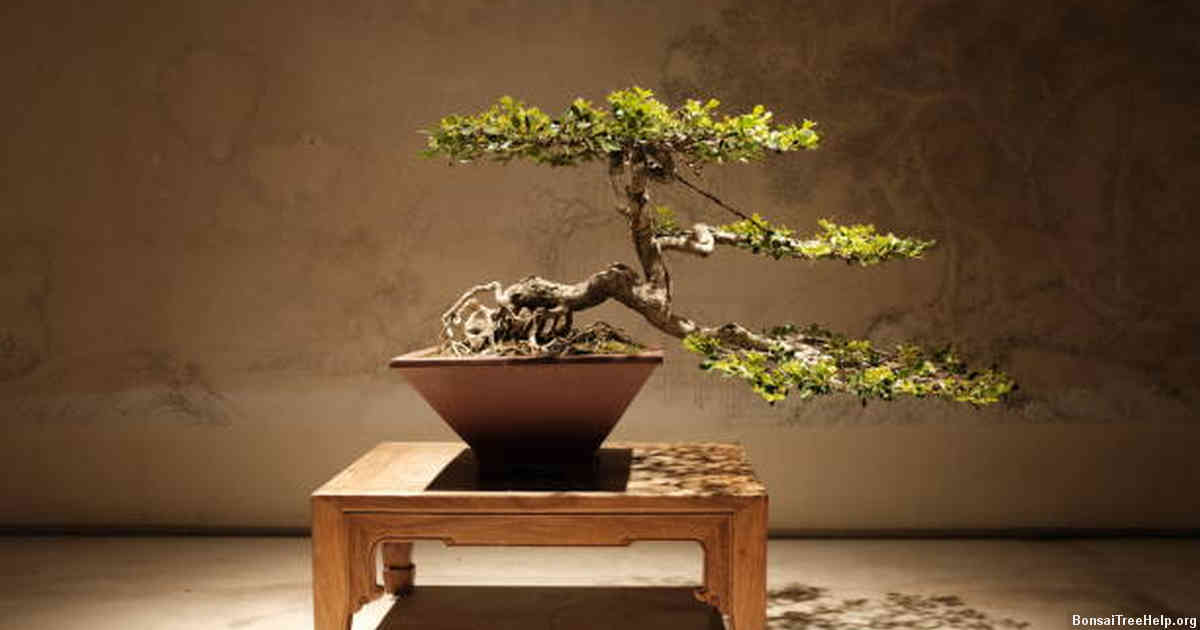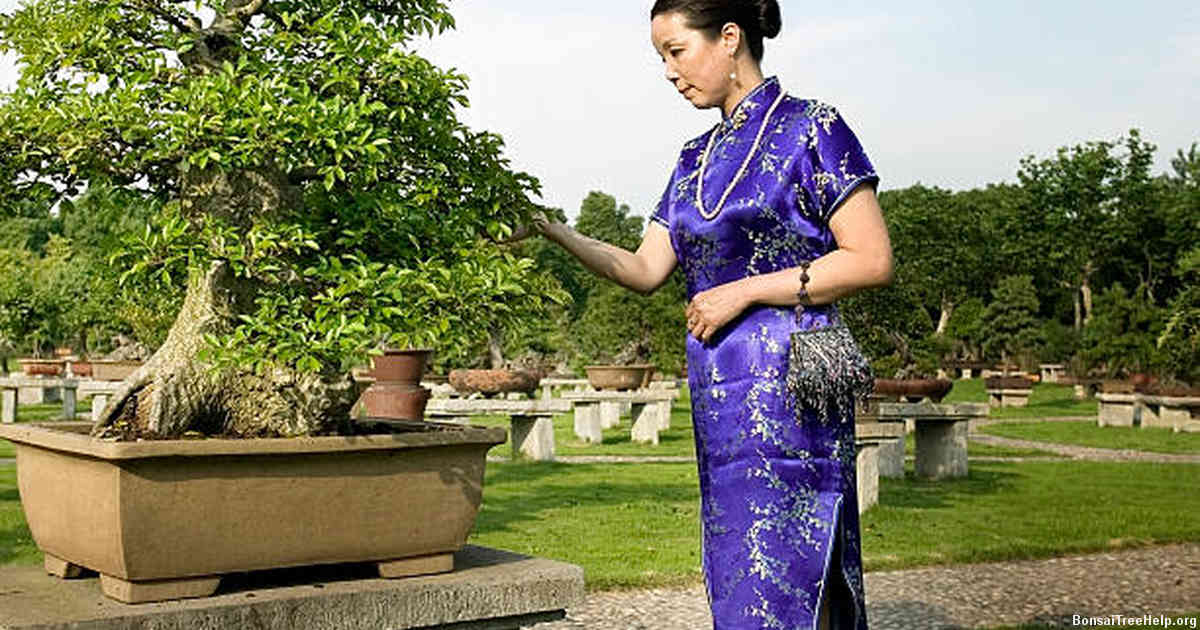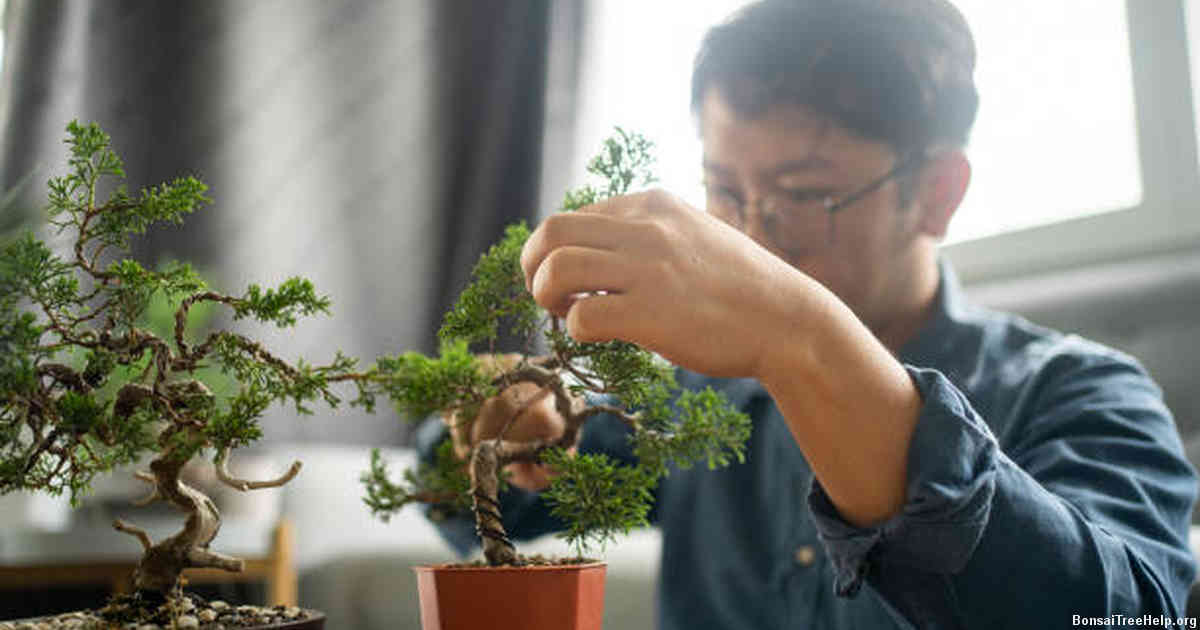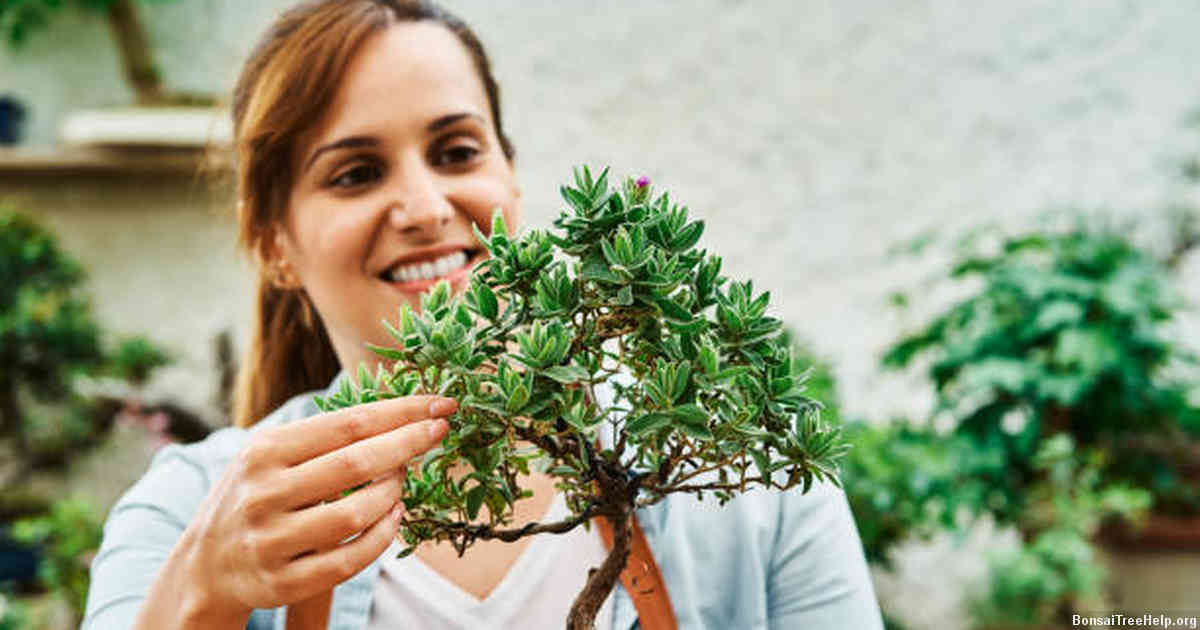
The plural of bonsai is bonsais. Bonsais are traditionally small trees and shrubs, which have been cultivated to remain miniature by pruning branches, leaves and roots while they grow. They can come in a variety of shapes and sizes, with some bonsais being as tall as 3 feet or higher. Each one is carefully shaped over years to create an aesthetically pleasing design that captures the natural beauty of trees in its miniature form.
Contents:
Introduction

Bonsai is a unique and beautiful form of art that has been around for centuries. It involves the cultivation of small trees and shrubs in containers to create an aesthetically pleasing miniaturized version of their natural counterpart. Typically, these specimens are kept alive for many years with careful pruning, repotting, and trimming. In this way, bonsai can bring beauty into otherwise plain spaces while also requiring little maintenance or time commitment.
The practice of bonsai was first documented in Japan over 800 years ago as a way to foster harmony between people and nature. The term itself translates loosely to “planted in a container,” which speaks directly to the painstaking process required to produce such miniature works of art. Although it has its origins in Japanese culture, today it’s popular around the world with enthusiasts learning how best to nurture their tiny trees and shrubs.
So what is the plural of bonsai? Generally speaking, you would refer to multiple miniature plants as bonsais – just like how deer would be referred to as deer even if there were more than one present. However, some cultures may opt for adding an ‘s’ at the end as well (i.e. bonsais). Ultimately though, both forms are accepted.
Plurals in English Language

English is a notoriously complex language in terms of spelling, grammar and pronunciation. Its vastness can leave even the most experienced English speaker stumped – as evidenced by the question of what is the plural of bonsai. Plurals are among some of the trickiest rules to grasp, as there isn’t always one hard-and-fast rule that applies to all words.
The default for many nouns in English is simply adding an “s” at the end – but not all plurals are formed this way. Irregular plurals often add complexity to the situation; for example, person becomes people rather than persons. Likewise, calf changes into calves and child becomes children. In some cases, more extreme changes might be necessary: mouse/mice; ox/oxen; tooth/teeth etcetera.
For some verbs which become nouns when put into plural form such as “bonsai”, you should use its Japanese origins by adding “s” after it resulting in bonsais – thus making it simpler instead of conjugating or changing entirely like irregular nouns aforementioned above. Unique and difficult spellings such as “o/” (“invoices”) follow similar pattern – just tack on an “-es”. Remember though that there will always be exceptions where singular words ending in consonants might change completely when putting them into plural form (die/dice). However if you have any doubts about how to correctly write a word’s plural version, it’s best advised to consult a reliable source such as dictionaries or grammar websites.
Different Forms of Pluralization

Pluralizing bonsai is a nuanced task, as Japanese and English pluralization rules often differ. In Japanese, the word ‘bonsai’ takes no ending to become plural; it simply remains unchanged. On the other hand, when speaking in English, one adds an ‘s’ to create the plural form: bonsais. Despite both being correct forms of pluralization for this particular word, there are additional ways to denote multiple bonsai trees.
Another commonly accepted term for multiple bonsai specimens is “grouping” or “assemblage.” By grouping together various species of plants within one area and displaying them together, you can effectively refer to that space as having many small bonsais arranged harmoniously instead of saying it has several individual ones. Grouping gives way to creative interpretations of traditional training techniques. A single large tree may be assembled from smaller separate ones placed together and given a larger-than-life appearance through skilled pruning and wiring techniques.
The phrase “collection” may also be used if referring to a set of several full-sized trees owned by someone such as a nurseryman or master cultivator who trains them extensively throughout the years with their own technique and style in mind. A collection might include rare specimens sourced from all around the world that were then trained into diverse yet captivating shapes–each tree telling its own unique story about its place in nature alongside their fellow comrades within the same display cabinet or stand.
Exception to Standard Rules of Pluralization

Pluralization can be a tricky area of the English language, especially when it comes to words that don’t quite follow the rules. One example of this is bonsai, the art form that consists of growing miniature trees in containers. For some reason, while most words end with an “s” when making them plural, when referring to multiple bonsai trees, you would use the word “bonsai” as both singular and plural. This rule has been established since it was first imported from Japan in 1875 by plant enthusiasts at London’s Kew Botanical Gardens. Since then, experts have argued that using different plurals for this term could confuse non-English speakers and lead to confusion within conversations about bonsais and their care.
However, there are exceptions to this rule which should be taken into consideration when discussing these plants. Though standard usage does not change between singular and plural forms of “bonsai,” if one were talking about types or styles of bonsais – for instance if someone was discussing a collection featuring Japanese White Pines versus Chinese Junipers – it is acceptable to refer to them as “different types/styles/kinds/varieties of bonsais”. It is also possible say something like “an array of colorful bonsais” if they come in many shades or hues; again underscoring the fact that they are all different individual examples of this art form rather than just a single entity.
The most important thing to keep in mind whenever speaking or writing about bonsais is context: being conscious and precise with how one phrases his or her thoughts will make communication easier no matter who’s involved.
Bonsai & Its Plural Form

Bonsai, the ancient Japanese horticultural practice of miniature tree-making, originated in China some two thousand years ago. In its native language, bonsai is written as 盆栽, which literally translates to “planting in a tray”. It describes not only the trees themselves but also refers to a whole set of procedures used for their cultivation and care. Over time, bonsai has come to be known throughout Japan – and indeed the world – for its unique artistry and ability to bring nature into small homes and gardens alike.
Understanding what it means when we refer to bonsai as an object or collection of objects requires familiarity with its plural form; after all, there are likely more than one particular plant involved here. When speaking about multiple specimens of a bonsai tree or entire setup thereof in English, most opt for calling them bonsais – pronounced BON-sigh – instead of employing the noun’s classical Latin pluralization by adding -ae (pronounced AY). Although both forms are acceptable and widespread among enthusiasts around the globe today, opting for “bonsais” will allow you maintain consistency across multiple languages while still adhering to proper grammar rules. To create effective miniature landscapes through this art form therefore often involves making use of several individual plants that then have to be cultivated specifically so they remain within size confines dictated by such project goals. Often these trees need specialized attention from knowledgeable caretakers over long periods of time; wherefore considering one’s own vocabulary accurately would enable them appreciate better said undertaking accordingly without detracting from their results’ overall aesthetic value either way.
The Possessive Case of Bonsai

When discussing bonsai, it is important to know what the possessive case of this word is. To use a word in its possessive form indicates that ownership or possession of something belongs to someone or something else. As such, the possessive of bonsai is simply “bonsai’s.” This term may also appear as “bonsais’s” or even “bonsais’”; however, both of these variants are technically incorrect when referring to the plural form of bonsai.
Using this knowledge, one can easily expand on construct sentences using correct grammar while talking about multiple specimens of bonsai trees. For example, “The garden has four beautiful bonsais’ foliage” would be a grammatically accurate sentence. Similarly, “I just purchased two new bonsais’ pots for my collection.” Would convey exactly what the speaker means without being subject to correction.
At times however, it may be more appropriate to use other grammar conventions in addition to the possessive form while talking about multiple specimens at once; many people find it much simpler and quicker than trying to deduce from context whether a single tree or multiple trees are being talked about. Therefore usage such as ‘the foliage of my three bonsais’, ‘I like caring for my several bonsais’ or ‘these five little bonsais look great.’ Will accurately convey the intended meaning without risking confusion due to incorrect grammar usage.
Common Mistakes Made While Writing the Plural Form of Bonsai

It is understandable why so many people make mistakes when it comes to writing the plural form of bonsai. After all, there is an association between this word and its singular form that can lead one astray. However, regardless of the linguistic similarities between these two words, there are certain distinctions that need to be kept in mind.
One of the most common errors made while writing the plural form of bonsai is assuming that because it is associated with a single object, adding an ‘s’ onto the end would suffice in creating a valid pluralization. While this may work for other words, it does not apply here; rather than attaching an ‘s’, one must attach an ‘i’. By doing so, one produces the proper variant: “bonsaï.” It should also be noted that this word features a double-dot above both letters (also referred to as diaeresis), although some font treatments omit this symbol.
Another misstep taken by those who attempt to write out the plural version of bonsai lies in their pronunciation when they speak aloud what they have written down–instead of putting emphasis on both syllables equally (so that they create separate parts – bon/saï) many emphasize just one syllable instead and thus merge them together into a single sound (bɔnˈsaɪ). This incorrect pronunciation can cause confusion among both native speakers and non-native English speakers alike.
Leave a Reply